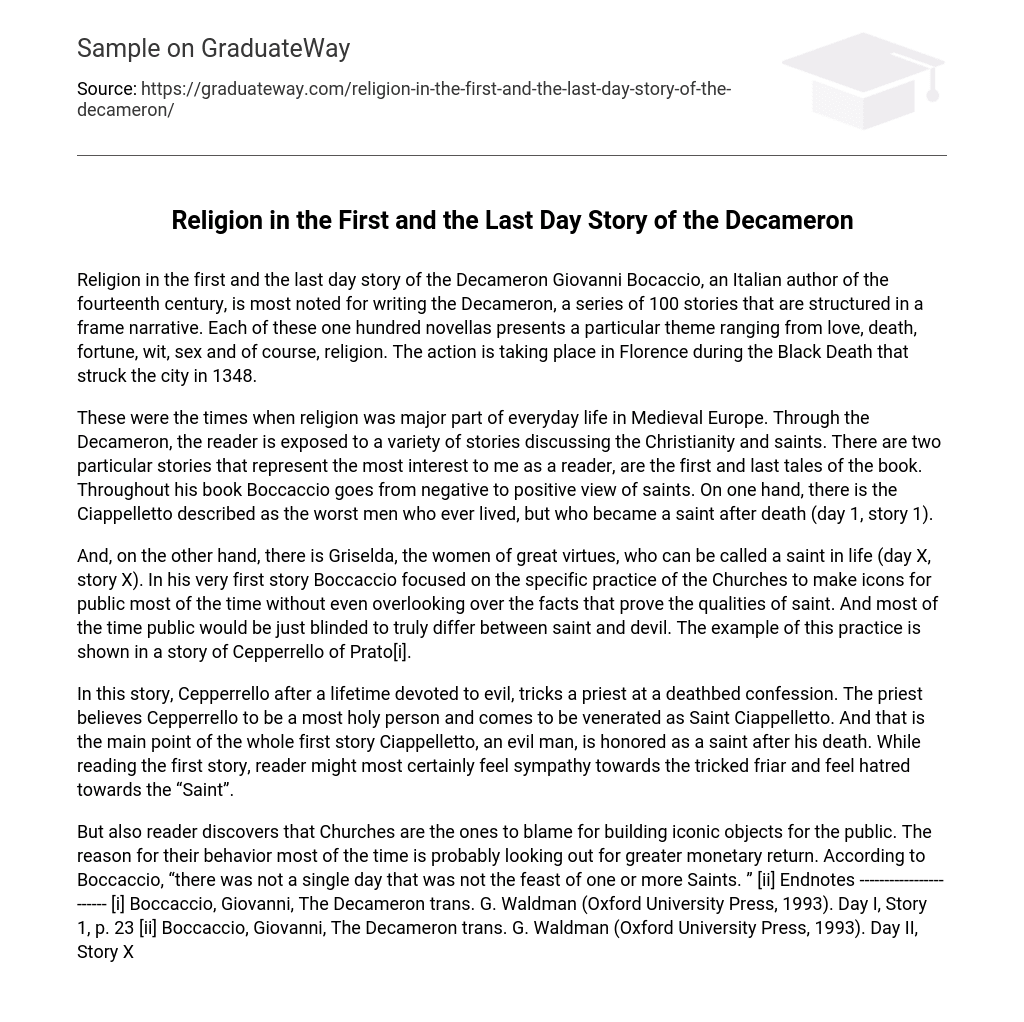Religion in the first and the last day story of the Decameron Giovanni Bocaccio, an Italian author of the fourteenth century, is most noted for writing the Decameron, a series of 100 stories that are structured in a frame narrative. Each of these one hundred novellas presents a particular theme ranging from love, death, fortune, wit, sex and of course, religion. The action is taking place in Florence during the Black Death that struck the city in 1348.
These were the times when religion was major part of everyday life in Medieval Europe. Through the Decameron, the reader is exposed to a variety of stories discussing the Christianity and saints. There are two particular stories that represent the most interest to me as a reader, are the first and last tales of the book. Throughout his book Boccaccio goes from negative to positive view of saints. On one hand, there is the Ciappelletto described as the worst men who ever lived, but who became a saint after death (day 1, story 1).
And, on the other hand, there is Griselda, the women of great virtues, who can be called a saint in life (day X, story X). In his very first story Boccaccio focused on the specific practice of the Churches to make icons for public most of the time without even overlooking over the facts that prove the qualities of saint. And most of the time public would be just blinded to truly differ between saint and devil. The example of this practice is shown in a story of Cepperrello of Prato[i].
In this story, Cepperrello after a lifetime devoted to evil, tricks a priest at a deathbed confession. The priest believes Cepperrello to be a most holy person and comes to be venerated as Saint Ciappelletto. And that is the main point of the whole first story Ciappelletto, an evil man, is honored as a saint after his death. While reading the first story, reader might most certainly feel sympathy towards the tricked friar and feel hatred towards the “Saint”.
But also reader discovers that Churches are the ones to blame for building iconic objects for the public. The reason for their behavior most of the time is probably looking out for greater monetary return. According to Boccaccio, “there was not a single day that was not the feast of one or more Saints. ” [ii] Endnotes ———————– [i] Boccaccio, Giovanni, The Decameron trans. G. Waldman (Oxford University Press, 1993). Day I, Story 1, p. 23 [ii] Boccaccio, Giovanni, The Decameron trans. G. Waldman (Oxford University Press, 1993). Day II, Story X





